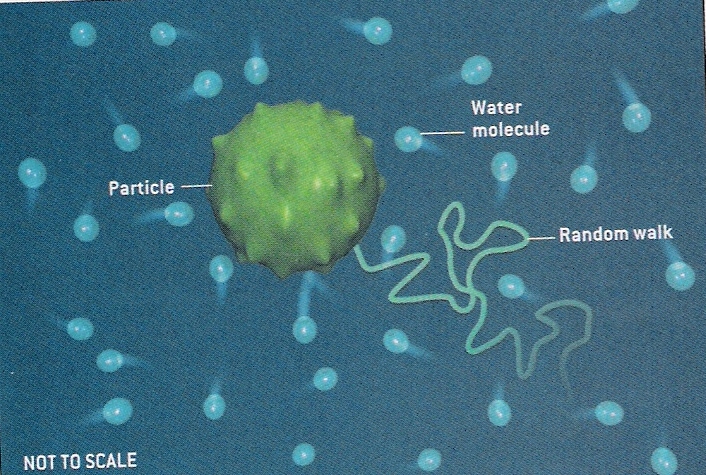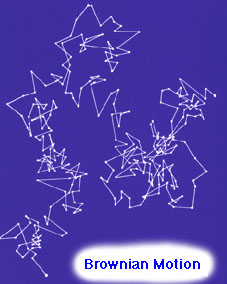Albert Einstein - A Centennial Celebration of His Miraculous Year
Brownian Motion
You may have heard that grains of pollen suspended in water are observed to vibrate around randomly.

Robert Brown (1773-1858), from answers.com.
This observation was first described in detail by Robert Brown in the early 1800's. Brown was a Scottish botanist.

Charles Darwin (1809-1882)
In fact, he was the first to clearly describe the cell nucleus, and Charles Darwin came to him for advice before beginning his journey on the H.M.S. Beagle in 1831. But the so-called Brownian motion is not restricted to pollen grains.

Brownian motion, from Scientific American.
Any small particles suspended in a liquid are in constant motion because the particles are incessantly bombarded with molecules of the liquid. However, at the turn of the 20th century, the atomic theory was not universally accepted. Einstein's work demonstrated how Brownian motion could be used to experimentally prove that molecules exist. It also allowed for the computation of certain constants, such as Avagadro's number, based on observations of Brownian motion.

The path of a particle in Brownian motion, from Kyoto University.
Quantitatively, Einstein showed that the root mean square displacement of a suspended particle increases with the square root of time. Before Einstein, it was assumed the displacement varied linearly. So several fundamental constants of nature could not be precisely determined until Einstein provided the correct answer to how Brownian motion behaves over time.
Go to Special Relativity section.




